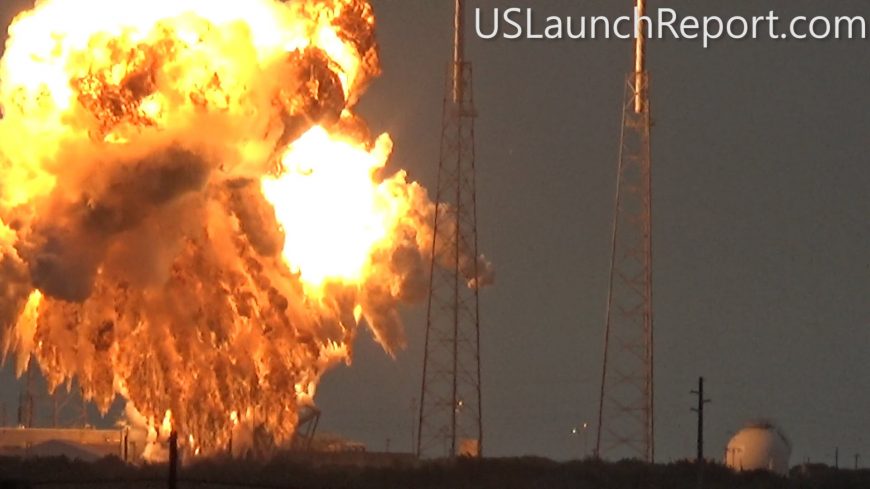Breaking: A major SpaceX Explosion at Cape Canaveral has Destroyed Facebook’s Very First Satellite

Today, Facebook was planning to launch their very first satellite, the AMOS-6, until it was destroyed by an unexpected explosion of its SpaceX Falcon 9 rocket.
Here’s Mark Zuckerberg’s statement regarding the incident.

“As I’m here in Africa, I’m deeply disappointed to hear that SpaceX’s launch failure destroyed our satellite that would have provided connectivity to so many entrepreneurs and everyone else across the continent.
Fortunately, we have developed other technologies like Aquila that will connect people as well. We remain committed to our mission of connecting everyone, and we will keep working until everyone has the opportunities this satellite would have provided.”
This satellite was a part of Facebook’s Internet.org program that was attempting to deliver internet to the less-developed parts of the world. The plan was to have it ride a SpaceX Falcon 9 rocket into orbit on Saturday. After the SpaceX failed, their plans aren’t quite on schedule. Facebook already had a massive presence in the world, but this would’ve been their first satellite in orbit.

The Falcon 9’s explosion on the Cape Canaveral launch pad not only destroyed the rocket, but Facebook’s AMOS-6 satellite as well… This is a $200-million hit for the company. We’re sure Mark will take no hit at that and another satellite will be taking its place as soon as they can get it approved.
This is Mark Zuckerberg’s original post about the satelite
“I’m excited to announce our first project to deliver internet from space. As part of our internet.org efforts to connect the world, we’re partnering with Eutelsat to launch a satellite into orbit that will connect millions of people.
Over the last year Facebook has been exploring ways to use aircraft and satellites to beam internet access down into communities from the sky. To connect people living in remote regions, traditional connectivity infrastructure is often difficult and inefficient, so we need to invent new technologies.
As part of our collaboration with Eutelsat, a new satellite called AMOS-6 is going to provide internet coverage to large parts of Sub-Saharan Africa. The AMOS-6 satellite is under construction now and will launch in 2016 into a geostationary orbit that will cover large parts of West, East and Southern Africa. We’re going to work with local partners across these regions to help communities begin accessing internet services provided through satellite.
This is just one of the innovations we’re working on to achieve our mission with internet.org Connectivity changes lives and communities. We’re going to keep working to connect the entire world — even if that means looking beyond our planet.”

